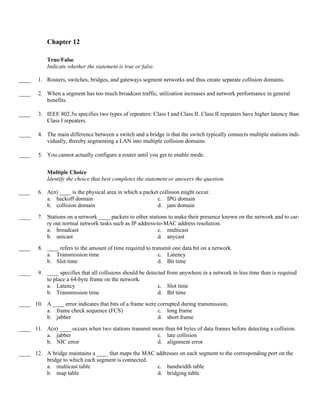The document contains a chapter of review questions about networking concepts including true/false, multiple choice, completion, matching, and short answer questions. The questions cover topics such as collision domains, broadcast traffic, Ethernet frame errors, Fast Ethernet implementations, Gigabit Ethernet standards, switching methods like cut-through forwarding, and Cisco switch configuration commands.








